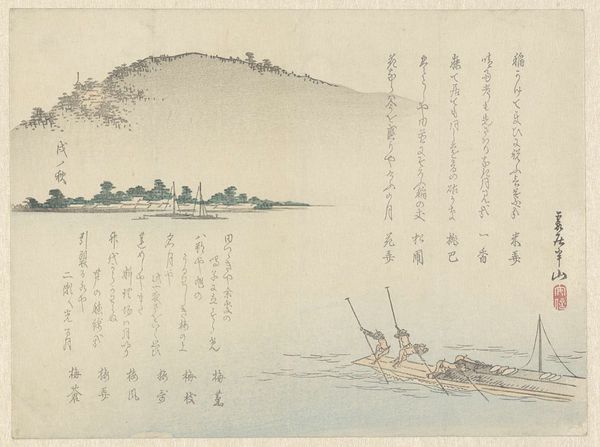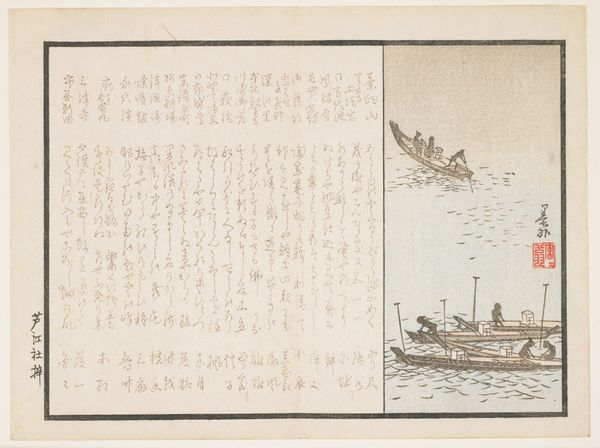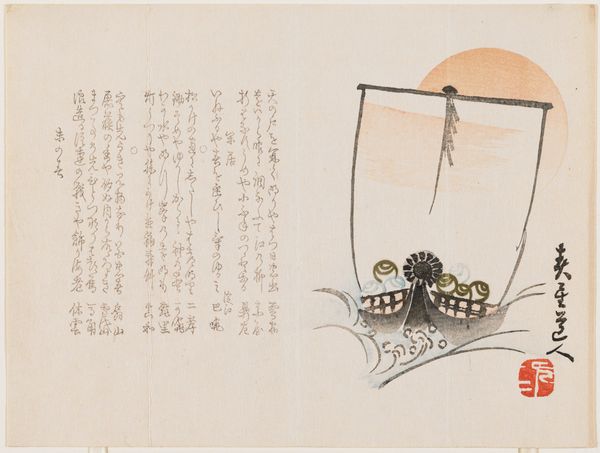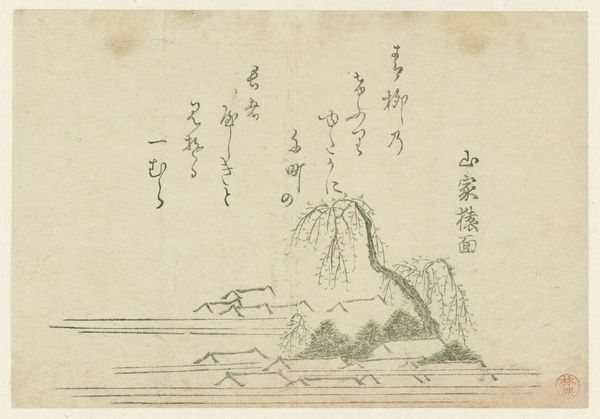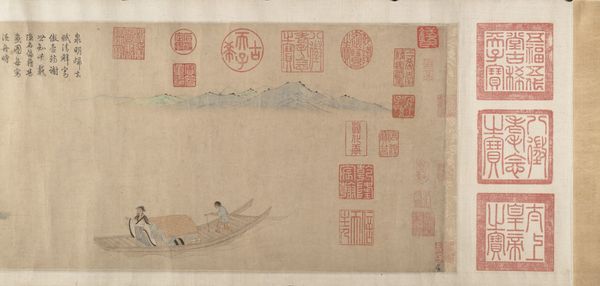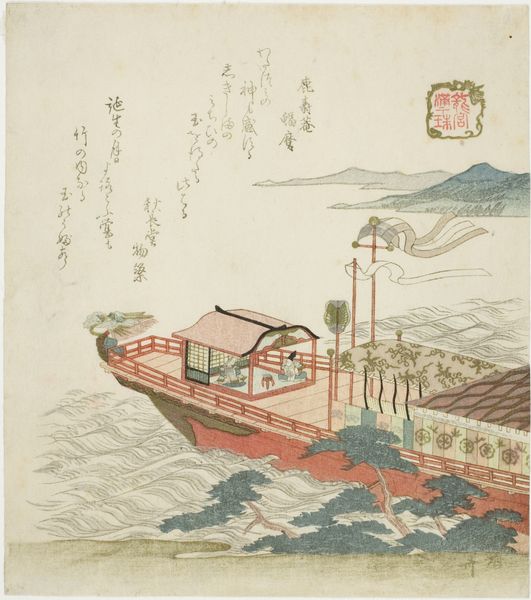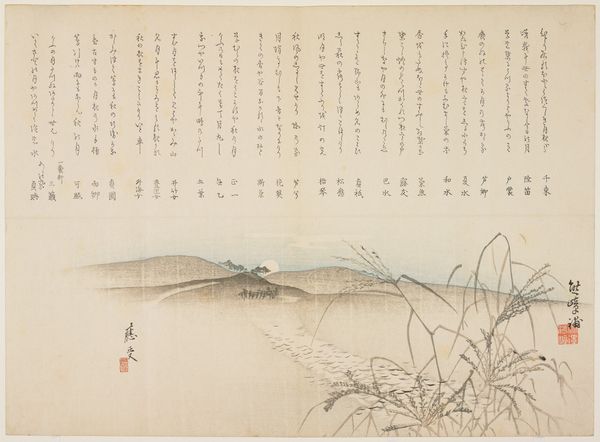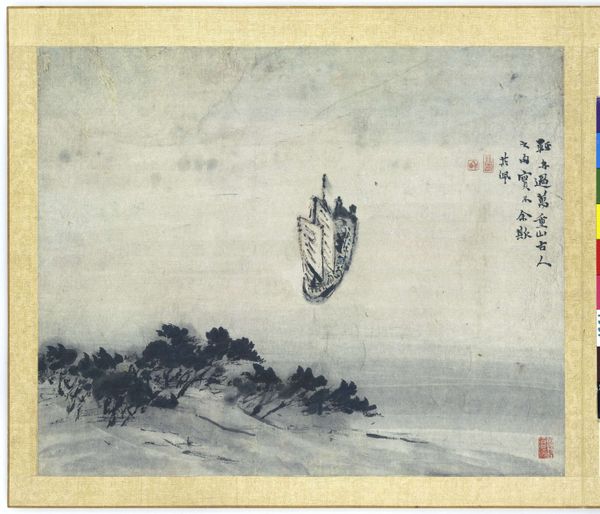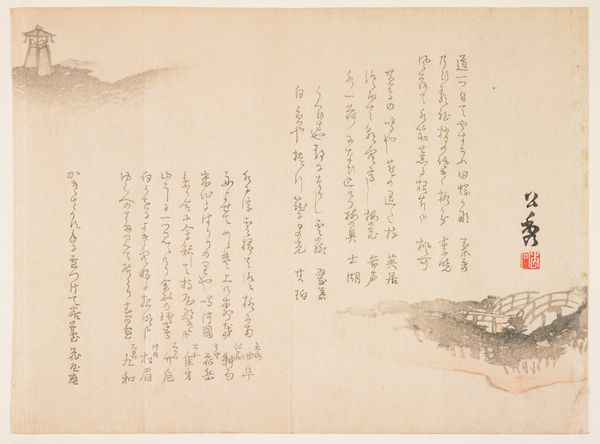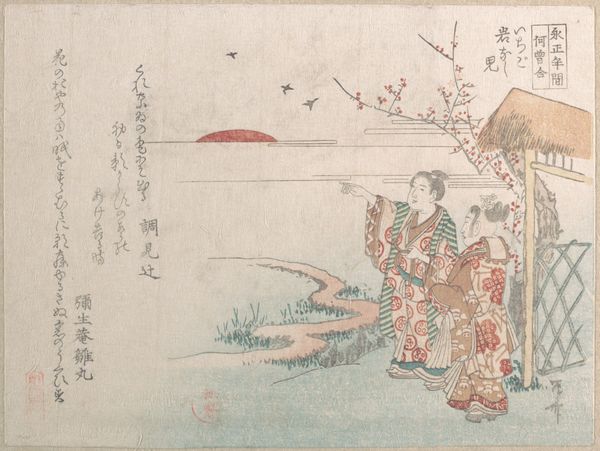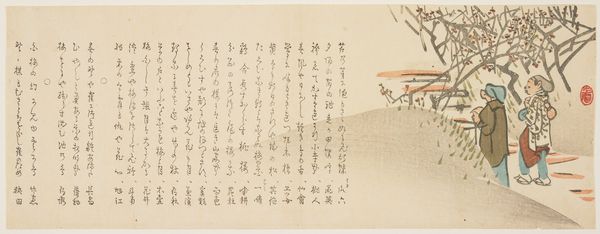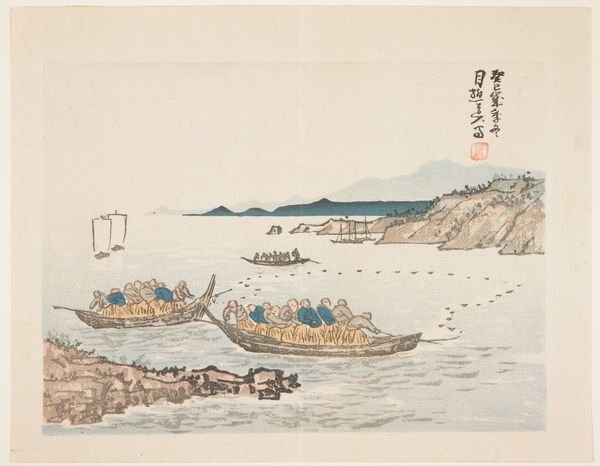
drawing, hanging-scroll, ink, pencil
#
drawing
#
pen sketch
#
asian-art
#
landscape
#
ukiyo-e
#
japan
#
hanging-scroll
#
ink
#
pencil
#
calligraphy
Dimensions: 9 1/2 × 13 1/2 in. (24.13 × 34.29 cm) (image)43 5/16 × 18 5/8 in. (110.01 × 47.31 cm) (mount, without roller)
Copyright: Public Domain
Curator: At first glance, this ink and pencil drawing titled "Boating Scene with Poem," likely created around the 19th century by Hoashi Kyōdō, evokes a remarkable sense of tranquility, doesn’t it? Editor: It does. There is such economy in the line work that it speaks volumes, while its subdued tonality gives it a feeling of serenity. Curator: Indeed. It's fascinating how the artist used simple pen and ink strokes to convey such depth and space in this hanging scroll. Ukiyo-e traditions of landscape depiction are definitely palpable, and it's critical that we recognize their influence here. Beyond pure aesthetics, the depicted boating scene often alludes to more profound, culturally-laden narratives linked to identity, class, and leisure activities accessible to select groups within Japanese society. Editor: And note how that calligraphic inscription adds another layer, a textural plane balanced with that asymmetrical organization of the landscape; it gives a harmonic whole to this composition. The calligraphy itself can be deconstructed and viewed for its individual parts, like its strokes and line-weights, in how it gives meaning to the work. Curator: Absolutely, the poem becomes inseparable from the imagery; we should not look at them as individual parts. How might it be reflecting ideals surrounding life and nature through a composite structure involving textual elements? Editor: One could view its organization as a system of spatial cues, if we really think about it structurally—a top-down and left-right organization; what message might we take away from there? Curator: Perhaps it is related to the societal status of intellectuals, scholars and poets—as they are represented to be enjoying time outdoors here, a visual trope, so to speak, for upper class leisure. But perhaps the relative inaccessibility of understanding the poem contributes, today, to a sort of modern elitism for the viewers? Editor: Interesting. It would depend on how that meaning is received and deconstructed by different people from diverse backgrounds, and where and how they come to this artwork, I think. Curator: I agree, this work acts as a portal for such open readings. Editor: Agreed—so much potential in such formal constraints and the intersectionality present, ultimately!
Comments
No comments
Be the first to comment and join the conversation on the ultimate creative platform.
